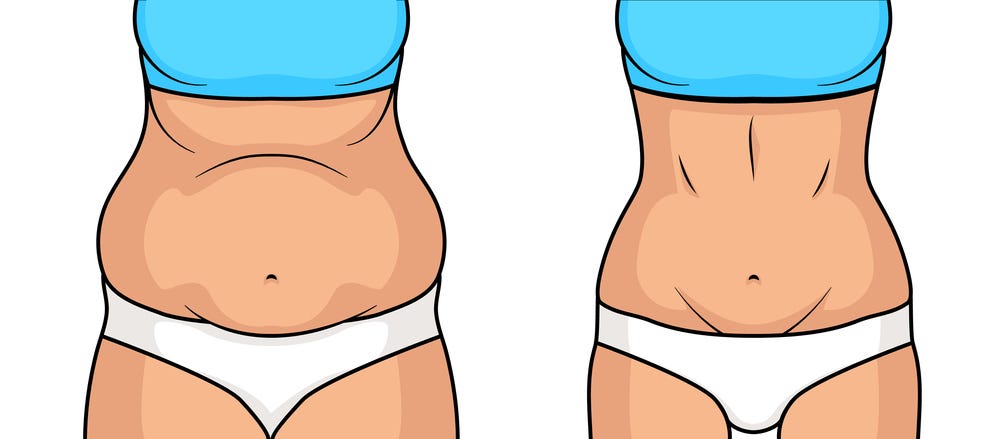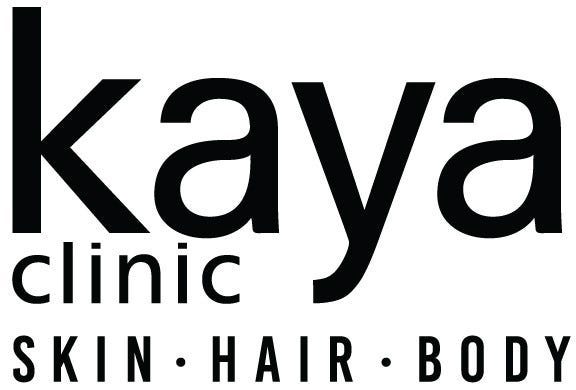Fat Reduction Treatment in Delhi | Surgical & Non-Surgical Options

Table of Contents
--------------------------------------------------------------------------
❀ Introduction
❀ What is Body Fat ?
❀ Types of fat reduction treatment
❀ Non-Surgical Fat Reduction Treatments
- Cryolipolysis (CoolSculpting)
- Radiofrequency (RF) Treatments
- Ultrasound-Based Treatments
- Laser-Assisted Treatments
❀ Surgical Fat Reduction Treatments
- Liposuction
- Abdominoplasty (Tummy Tuck)
- Bariatric Surgery
- Injection Lipolysis (Kybella)
❀ Combination Treatments and Holistic Approaches
❀ Conclusion
--------------------------------------------------------------------------
Introduction
In today's image-conscious society, the desire for a slender, toned physique has never been more prevalent. Excess body fat, whether concentrated in specific areas or distributed throughout the body, can be a source of frustration and self-consciousness for many individuals. Fortunately, advancements in medical and aesthetic technologies have paved the way for a wide range of fat reduction treatments, catering to diverse needs and preferences.
This comprehensive blog post aims to provide you with a detailed overview of both surgical and non-surgical fat reduction options, empowering you to make informed decisions about the most suitable approach for your individual goals and circumstances. Whether you're struggling with stubborn pockets of fat or seeking a more dramatic body transformation, this guide will unveil the secrets to effective fat reduction and help you navigate the ever-evolving landscape of aesthetic treatments.
What is Body Fat ?
To fully appreciate the various fat reduction treatments available, it's essential to understand the different types of body fat and the factors that contribute to their accumulation. Body fat can be categorized into three main types: subcutaneous, visceral, and intramuscular.
➤ Subcutaneous fat is the layer of fat that sits just beneath the skin, visible to the naked eye and often the primary target of fat reduction treatments. This type of fat is the most common and easily accessible, making it a popular focus for individuals seeking to improve their physical appearance.
➤ Visceral fat, on the other hand, is the deep abdominal fat that surrounds vital organs, such as the liver, heart, and kidneys. Unlike subcutaneous fat, visceral fat is not as easily noticeable, but its excessive buildup is associated with an increased risk of chronic health conditions, such as heart disease, type 2 diabetes, and certain types of cancer.
➤ Intramuscular fat, as the name suggests, is the fat stored within the muscle tissue itself. This type of fat can have a significant impact on muscle definition and overall body composition, as it can interfere with the appearance of toned, sculpted muscles.
The accumulation of body fat is influenced by a complex interplay of factors, including genetics, hormonal imbalances, age, and lifestyle choices. While some individuals may be predisposed to storing fat in certain areas, poor diet, sedentary behavior, and stress can all contribute to the gradual increase in overall body fat. Understanding these underlying causes is essential when exploring the most suitable fat reduction approach.
Genetics play a crucial role in the way the body stores and distributes fat. Some individuals may have a genetic predisposition to accumulating fat in specific areas, such as the abdomen, thighs, or arms, making it more challenging to achieve their desired body shape through traditional weight loss methods. Hormonal imbalances, such as thyroid disorders or insulin resistance, can also contribute to the accumulation of body fat, often leading to a disproportionate distribution throughout the body.
As we age, our metabolism tends to slow down, making it more difficult to maintain a healthy body composition. Additionally, lifestyle factors, such as a sedentary lifestyle, poor dietary habits, and high-stress levels, can further exacerbate the problem, leading to a gradual increase in body fat over time.
Understanding these various factors that influence body fat accumulation is crucial when selecting the most appropriate fat reduction treatment. By addressing the underlying causes, individuals can not only achieve more effective and lasting results but also improve their overall health and well-being.
Types of fat reduction treatment
Non-Surgical Fat Reduction Treatments Detailed Information
In the realm of non-surgical fat reduction, several innovative technologies have emerged, offering a range of options for those seeking to target stubborn fat deposits without the need for invasive procedures.
Cryolipolysis (CoolSculpting) Cryolipolysis, also known as CoolSculpting, is a non-invasive fat reduction treatment that utilizes controlled cooling to selectively target and eliminate fat cells. During the procedure, a specialized applicator is placed on the treatment area, delivering precise cooling that triggers a process called apoptosis, or programmed cell death, in the targeted fat cells. Over the following weeks and months, the body naturally eliminates these damaged fat cells, resulting in a gradual reduction in fat volume.
CoolSculpting Treatment is particularly effective in addressing stubborn pockets of fat that are resistant to diet and exercise, such as the abdomen, love handles, thighs, and double chin. The treatment is relatively quick, with each session lasting around 35-60 minutes, and multiple sessions may be required to achieve the desired results. Patients typically experience little to no downtime, with some temporary redness, swelling, or numbness in the treated area, which typically resolves within a few days.
One of the key advantages of CoolSculpting is its ability to target specific areas of the body, allowing for a more customized approach to fat reduction. The procedure is well-tolerated, with minimal discomfort reported by most patients, making it an attractive option for those who prefer a non-invasive solution.
Radiofrequency (RF) Treatments : Radiofrequency (RF) treatments offer a non-invasive approach to fat reduction by using thermal energy to target and disrupt fat cells. These technologies, such as Vanquish, Exilis, and Thermage, utilize controlled radiofrequency waves to heat the subcutaneous fat, causing it to break down and be naturally eliminated by the body over time.
RF treatments are versatile, as they can be used to address various areas of the body, including the abdomen, thighs, arms, and chin. The procedure is generally well-tolerated, with minimal discomfort and no downtime. Patients may experience some mild redness or swelling immediately after the treatment, but these side effects typically subside within a few hours. The results of RF treatments are gradual, with patients usually seeing a noticeable improvement in their targeted areas over the course of several weeks or months.
One of the advantages of RF treatments is their ability to target both fat and skin laxity simultaneously. The controlled heating not only disrupts fat cells but also stimulates collagen production, leading to tighter, more toned skin in the treated areas. This dual-action approach can be particularly beneficial for individuals who are concerned about both excess fat and sagging skin.
HIFU : High-Intensity Focused Ultrasound is a non-invasive fat reduction technology that utilizes targeted ultrasound waves to disrupt and destroy fat cells. Unlike traditional ultrasound, which is used for imaging, HIFU treatments deliver concentrated energy directly to the subcutaneous fat, causing the fat cells to rupture and be naturally eliminated by the body.
HIFU treatments are often used to address areas such as the abdomen, flanks, and thighs, and the procedure is generally well-tolerated with minimal downtime. Patients may experience some temporary redness, swelling, or numbness in the treated areas, but these side effects are typically mild and short-lived. The results of HIFU can be seen over the course of several weeks to months, as the body gradually removes the damaged fat cells.
One of the key benefits of HIFU is its ability to target deeper layers of fat without damaging the overlying skin. This precise targeting allows for a more focused approach to fat reduction, with minimal impact on the surrounding tissues. Additionally, HIFU treatments are often considered less invasive than other non-surgical options, making them an appealing choice for individuals who prefer a gentler approach.
Laser-Assisted Treatments Laser-based fat reduction technologies, such as SculpSure and Zerona, use targeted laser energy to disrupt and liquefy fat cells, which are then naturally eliminated by the body's lymphatic system.
SculpSure, for example, utilizes a non-invasive laser to heat and destroy fat cells in the treated areas, which can include the abdomen, love handles, thighs, and double chin. The procedure is relatively quick, with each session lasting around 25 minutes, and patients can typically return to their normal activities immediately after the treatment. The results of SculpSure are gradual, with patients seeing a noticeable improvement in the targeted areas over the course of several weeks.
Zerona, on the other hand, is a non-invasive, body-contouring laser that works by emitting low-level laser energy to disrupt the fat cells, allowing them to be flushed out of the body through the lymphatic system. Unlike SculpSure, Zerona treatments involve multiple sessions over the course of several weeks, and the results are typically more subtle, with patients reporting a gradual reduction in targeted fat deposits.
One of the advantages of laser-assisted treatments is their ability to target specific areas of the body without the need for incisions or significant downtime. Patients can often resume their normal activities immediately after the procedure, making these treatments a convenient option for those with busy schedules.
Surgical Fat Reduction Treatments
While non-surgical fat reduction treatments offer a convenient and less invasive approach, there are times when surgical interventions may be necessary to achieve more dramatic and long-lasting results. These surgical options are designed to address larger volumes of fat or to address sagging skin and excess tissue that may not be adequately addressed by non-surgical methods.
Liposuction : Liposuction, often considered the gold standard in surgical fat reduction, is a well-established procedure that involves the targeted removal of excess fat deposits from various areas of the body. During the procedure, a small incision is made, and a thin, hollow tube called a cannula is inserted to suction out the unwanted fat.
Liposuction techniques have evolved over the years, with advancements such as tumescent liposuction and power-assisted liposuction offering improved precision, reduced recovery time, and minimized risk of complications. Tumescent liposuction, for example, involves the injection of a dilute local anesthetic solution to the treatment area, which helps to numb the area and reduce bleeding. Power-assisted liposuction, on the other hand, utilizes a specialized cannula that vibrates or oscillates, allowing for more efficient fat removal with less physical effort from the surgeon.
Liposuction is commonly used to address stubborn fat deposits in areas such as the abdomen, love handles, thighs, arms, and chin. The procedure is generally well-tolerated, with patients experiencing some swelling, bruising, and mild discomfort in the treated areas, which typically subsides within a few days to a week. The final results of liposuction can be seen within a few months, as the body adjusts to the new contours.
One of the key advantages of liposuction is its ability to target and remove larger volumes of fat, often providing more dramatic and long-lasting results compared to non-surgical treatments. Additionally, the procedure can be customized to address specific problem areas, allowing for a more tailored approach to body contouring.
Abdominoplasty (Tummy Tuck) : Abdominoplasty, commonly known as a tummy tuck, is a surgical procedure that addresses both excess fat and sagging skin in the abdominal area. This comprehensive approach is particularly beneficial for individuals who have experienced significant weight loss, pregnancy, or genetic factors that have resulted in a protruding or loose abdominal profile.
During the tummy tuck procedure, the surgeon makes an incision along the lower abdomen, just above the pubic area, and removes excess skin and fat. In some cases, the surgeon may also tighten the underlying abdominal muscles to achieve a more sculpted and toned appearance. The resulting scar is typically positioned low on the abdomen, allowing it to be easily concealed by clothing.
Tummy tuck surgery is considered a more extensive procedure compared to liposuction, with a longer recovery time. Patients can expect to experience swelling, bruising, and some discomfort in the weeks following the surgery, but the results can be quite dramatic, with a flatter, more contoured abdomen and a more youthful, toned appearance.
One of the primary advantages of abdominoplasty is its ability to address both excess fat and sagging skin in the abdominal area, providing a comprehensive solution for individuals who have undergone significant weight changes or have genetic predispositions to a protruding midsection. Additionally, the tightening of the abdominal muscles can help to restore core strength and improve overall body contour.
Bariatric Surgery : Bariatric surgery, also known as weight loss surgery, is a more comprehensive approach to addressing severe obesity and its associated health risks. This type of surgical intervention is typically recommended for individuals who have exhausted other weight loss methods, such as diet and exercise, and are struggling with morbid obesity, defined as a body mass index (BMI) of 40 or higher, or a BMI of 35 or higher with associated health complications.
There are several types of bariatric procedures, including gastric bypass, gastric sleeve, and gastric banding. Each of these techniques aims to restrict the amount of food the stomach can hold, leading to significant and sustained weight loss. Gastric bypass, for example, involves creating a small pouch from the upper part of the stomach and connecting it directly to the small intestine, bypassing a portion of the digestive system. Gastric sleeve surgery, on the other hand, involves removing a large portion of the stomach, resulting in a smaller, sleeve-like structure.
While bariatric surgery is considered a highly effective treatment for morbid obesity, it is also a more complex and invasive procedure, with a longer recovery period and a higher risk of potential complications. Patients undergoing bariatric surgery must also commit to significant lifestyle changes, including a restricted diet and regular exercise, to maintain the positive outcomes of the procedure.
One of the key advantages of bariatric surgery is its ability to address the underlying causes of severe obesity, rather than just targeting specific fat deposits. By altering the digestive system and restricting food intake, bariatric procedures can lead to substantial and sustained weight loss, often resulting in significant improvements in overall health and quality of life.
Injection Lipolysis (Kybella) Injection lipolysis, exemplified by the treatment Kybella, is a minimally invasive approach to targeting and destroying localized fat deposits, particularly in the submental area (under the chin). This treatment involves a series of injections of a synthetic version of deoxycholic acid, a naturally occurring substance in the body that aids in the breakdown and absorption of dietary fat.
During the Kybella procedure, the healthcare provider carefully injects the solution into the targeted fat deposits, causing the fat cells to rupture and be naturally eliminated by the body over time. While the results of Kybella are generally more gradual compared to surgical options, the treatment is well-tolerated, with patients typically experiencing some temporary swelling, bruising, or numbness in the treated area.
Kybella is particularly beneficial for individuals who are self-conscious about a double chin or excess fat beneath the jawline, as it can help to improve the contours of the neck and chin area without the need for extensive surgery. The minimally invasive nature of the procedure, combined with its ability to target specific fat deposits, makes Kybella an attractive option for those seeking a more discreet and less invasive solution to their aesthetic concerns.
Combination Treatments and Holistic Approaches
In some cases, a combination of both surgical and non-surgical fat reduction treatments may be the most effective approach to achieving the desired results. For example, liposuction may be combined with a tummy tuck to address both excess fat and sagging skin in the abdominal area, or CoolSculpting may be used to target specific areas before a body-contouring surgical procedure.
Additionally, a holistic approach that incorporates lifestyle modifications, such as a balanced diet and regular exercise, can greatly enhance the outcomes of any fat reduction treatment, surgical or non-surgical. By addressing the underlying causes of fat accumulation and supporting the body's natural processes, patients can achieve more sustainable and long-lasting results.
Adopting a balanced, nutrient-rich diet can help to regulate hormonal imbalances, improve metabolism, and support the body's natural fat-burning mechanisms. Incorporating regular exercise, such as a combination of cardiovascular activities and strength training, can also help to burn excess fat, build lean muscle mass, and improve overall body composition.
Additionally, managing stress levels through practices like meditation, yoga, or mindfulness can play a crucial role in maintaining a healthy weight and body shape. Stress can contribute to the accumulation of visceral fat, as well as disrupt the hormonal balance, making it more challenging to achieve and maintain desired results.
By combining the appropriate fat reduction treatment with a holistic approach to overall health and wellness, individuals can unlock the secrets to a more confident, vibrant, and sustainable transformation.
Conclusion





